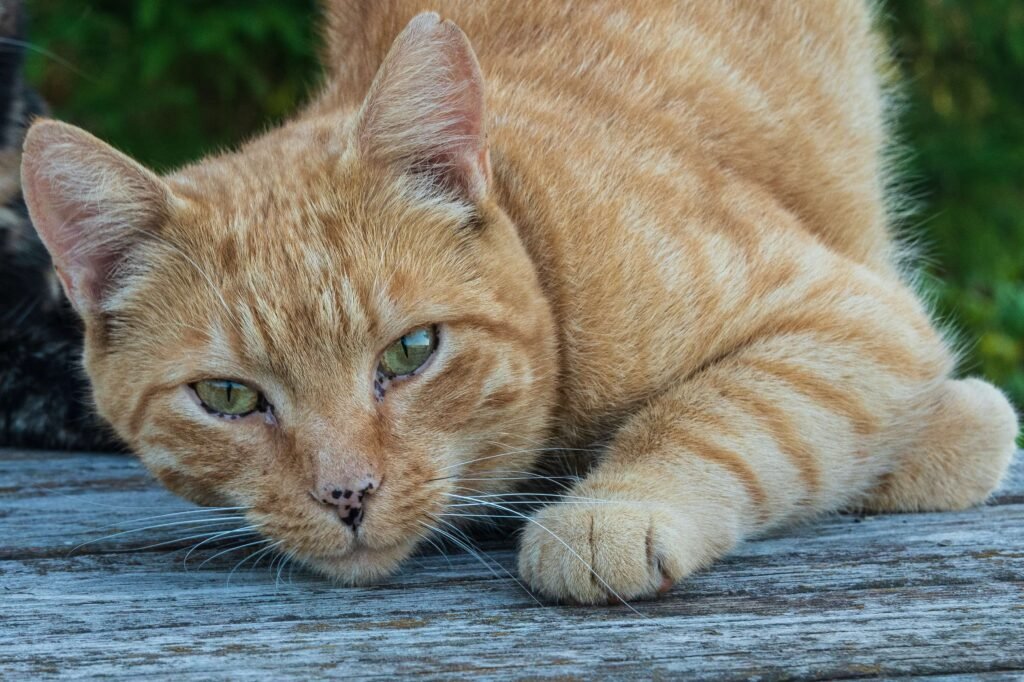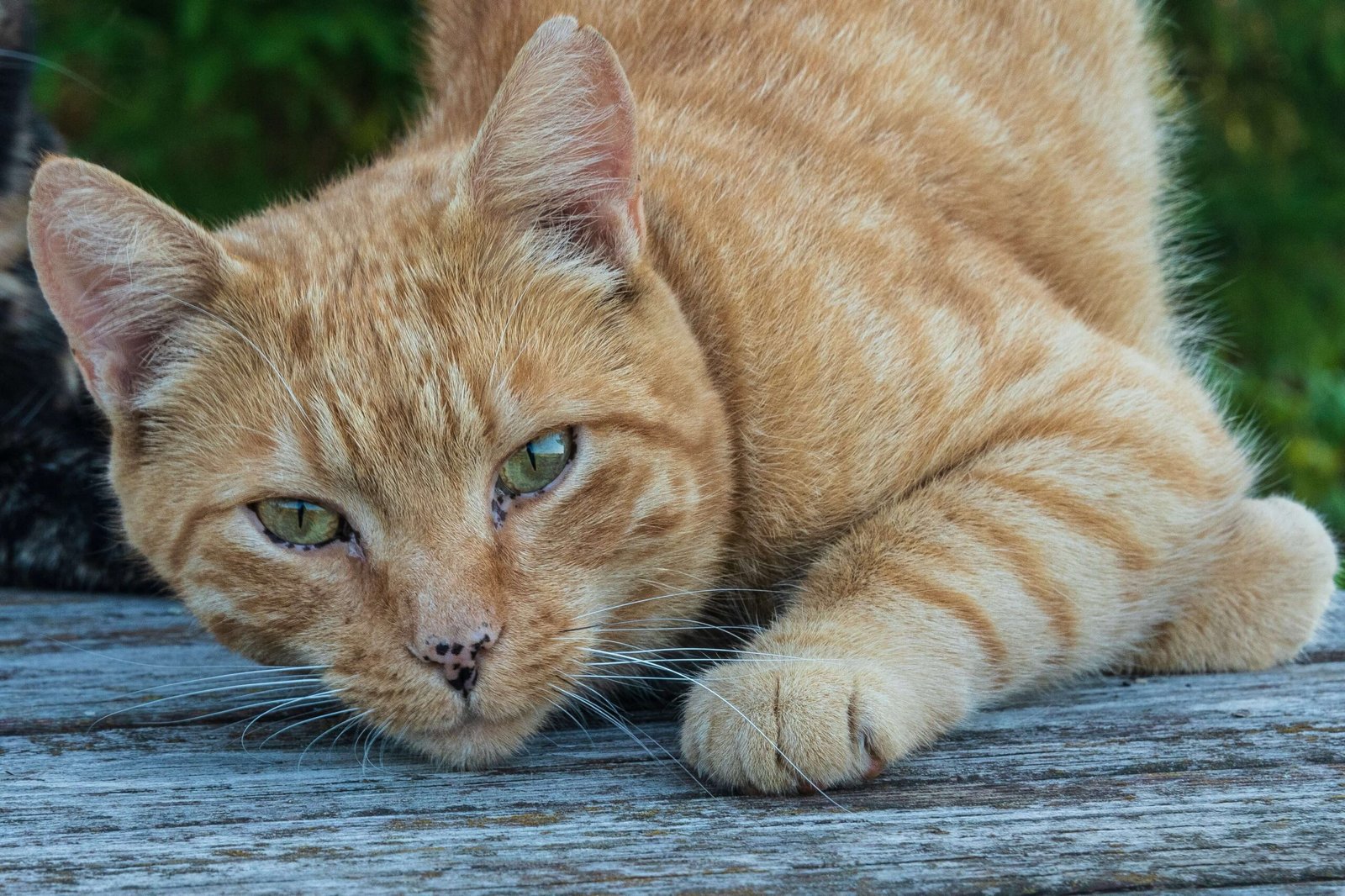The Unique Charm of Cats Without Tails
Cats without tails are a fascinating and distinctive group, often turning heads with their unusual appearance. From naturally tailless breeds like the Manx to cats who have lost their tails due to injury or birth defects, these felines capture our hearts with their quirky charm and unique personalities. But what makes a cat without a tail different from their tailed counterparts? Are there specific care needs or behavioral traits to consider?
In this blog post, we’ll explore everything you need to know about cats without tails, from their origins and characteristics to tips for keeping them happy and healthy. Whether you’re already a proud owner or simply curious, this guide will help you appreciate the special qualities of these remarkable cats.
Breeds and Causes of Taillessness in Cats
While some cats are born without tails due to genetics, others may lose their tails later in life. Understanding the reasons behind taillessness can help you better care for these unique felines. Here’s an overview of the main causes:
Manx Breed
The Manx is the most well-known tailless breed, originating from the Isle of Man. Their taillessness is a result of a natural genetic mutation.Japanese Bobtail
Unlike the Manx, the Japanese Bobtail has a short, stubby tail that resembles a pom-pom. This trait is also genetic but distinct from the Manx mutation.Injury or Accident
Some cats lose their tails due to accidents, such as being hit by a car or caught in machinery.Congenital Defects
Certain kittens are born without tails due to developmental abnormalities during pregnancy.Surgical Amputation
In rare cases, a cat’s tail may be surgically removed due to injury, disease, or infection.
Each cause of taillessness comes with its own considerations, but one thing remains constant: these cats are just as lovable and deserving of care as any other feline.
Physical Characteristics of Tailless Cats
Cats without tails often exhibit unique physical traits that set them apart from their tailed counterparts. These characteristics not only affect their appearance but also influence their movement and behavior. Here’s what to look out for:
Compensatory Balance
Without a tail, these cats rely more on their hind legs and core muscles to maintain balance while jumping or climbing.Sturdy Build
Many tailless breeds, like the Manx, have a stocky, muscular frame that compensates for the lack of a tail.Shorter Spine
Tailless cats often have slightly shorter spines, which can impact their flexibility and gait.Unique Gait
Their walk or run may appear more “hop-like” due to the absence of a tail for counterbalance.Expressive Body Language
Without a tail to communicate emotions, these cats rely more on facial expressions and body posture to interact with humans and other animals.
These physical traits make tailless cats truly one-of-a-kind, showcasing their adaptability and resilience despite their differences.
Check this guide 👉Cat Wagging Tail While Sleeping: Best 7 Expert Tips!
Check this guide 👉What Does a Cats Tail Twitching Really Mean? Best 7 Tips!
Check this guide 👉Why Do Cats Chase Their Tails? Best 7 Behavior Tips!

Tailless Cat Breeds | Key Characteristics |
|---|---|
Manx | Naturally tailless, sturdy build |
Japanese Bobtail | Short, pom-pom-like tail |
Cymric (Longhaired Manx) | Fluffy coat, similar to Manx |
Kurilian Bobtail | Curly or kinked short tail |
American Bobtail | Medium-length tail, wildcat look |
Behavioral Traits of Tailless Cats
The absence of a tail can influence a cat’s behavior and interactions with their environment. While tailless cats share many traits with tailed cats, there are subtle differences worth noting. Here’s what to expect:
Playful Nature
Despite their unique physique, tailless cats are often energetic and love interactive play.Strong Bonding
Breeds like the Manx are known for forming deep attachments to their human families, often following them around the house.Adaptability
These cats quickly adapt to new environments, relying on their intelligence and resourcefulness.Curiosity
Like most cats, they are naturally curious but may approach situations more cautiously due to their altered balance.Communication Style
Without a tail to express emotions, they may vocalize more or use exaggerated body movements to get their point across.
Understanding these behavioral traits helps foster a stronger connection with your tailless cat and ensures their needs are met.
Health Considerations for Cats Without Tails
Cats without tails may face specific health challenges related to their unique physiology. Being aware of these potential issues allows you to provide the best possible care. Here’s what to watch out for:
Manx Syndrome
A condition affecting some Manx cats, characterized by spinal defects, bladder problems, or digestive issues.Mobility Challenges
The absence of a tail can sometimes lead to difficulties with balance or coordination.Joint Problems
Tailless cats may be prone to arthritis or other joint-related conditions due to their altered skeletal structure.Skin Sensitivity
The area where the tail would have been may require extra attention to prevent irritation or infection.Regular Vet Check-Ups
Frequent veterinary visits are essential to monitor their overall health and address any breed-specific concerns.
By staying vigilant and proactive, you can ensure your tailless cat enjoys a long, healthy, and happy life.
Fun Facts About Tailless Cats
Tailless cats have captivated human imagination for centuries, and their unique traits often come with fascinating stories and trivia. Here are some fun facts that highlight their charm and history:
Manx Folklore
The Manx cat is said to have lost its tail because it was late boarding Noah’s Ark, and the door slammed shut on its tail.Symbol of Good Luck
In Japanese culture, the Bobtail is considered a symbol of good fortune and prosperity, often depicted in traditional art.Hunting Prowess
Tailless cats, particularly the Manx, were prized for their exceptional hunting skills on farms and ships.Versatile Athletes
Despite lacking a tail, these cats excel at climbing and jumping, showcasing their incredible adaptability.Rare Beauty
Tailless breeds like the Kurilian Bobtail are relatively rare, making them highly sought after by cat enthusiasts.
These fun facts underscore the rich history and unique qualities of tailless cats, adding to their allure as beloved companions.
Tips for Playing with Tailless Cats
Engaging in playtime with your tailless cat is not only fun but also essential for their physical and mental well-being. Here are some tips to make playtime enjoyable and safe:
Use Ground-Level Toys
Opt for toys that stay close to the ground, as tailless cats may find it harder to balance while batting at items in the air.Interactive Laser Pointers
Laser pointers can encourage running and pouncing, helping them exercise their strong hind legs.Soft, Safe Materials
Choose toys made from soft or plush materials to avoid injury, especially if they fall while playing.Encourage Exploration
Create obstacle courses or tunnels to stimulate their curiosity and natural instincts.Monitor Play Intensity
Keep an eye on their energy levels to ensure they don’t overexert themselves during play.
By tailoring playtime to their unique needs, you can help your tailless cat stay active, entertained, and healthy.
Adapting Your Home for a Tailless Cat
Living with a tailless cat requires some thoughtful adjustments to ensure your home is safe and comfortable for them. Here are practical ways to adapt your space:
Provide Soft Landing Zones
Place cushions or mats under high surfaces to cushion potential falls due to balance challenges.Secure Hazardous Areas
Block off access to ledges or narrow spaces where they might struggle to maneuver safely.Minimize Slippery Floors
Use rugs or non-slip mats to prevent slipping, especially on hardwood or tiled floors.Install Low Shelves
Offer low shelves or perches so they can climb and observe without straining their balance.Create a Calm Environment
Reduce stressors like loud noises or sudden movements, as tailless cats may feel more vulnerable without a tail for communication.
With these adaptations, you can create a safe and nurturing environment that caters to the specific needs of your tailless feline friend.
Frequently Asked Questions About Cats Without Tails
Are all tailless cats the same breed?
No, taillessness can occur in various breeds or as a result of injury or congenital conditions.
Can tailless cats jump as well as tailed cats?
Yes, they adapt by using their strong hind legs and core muscles to compensate for the lack of a tail.
Do tailless cats require special care?
While they don’t need drastically different care, regular vet check-ups and attention to mobility are important.
Are tailless cats less expressive?
Not at all—they rely on vocalizations, facial expressions, and body language to communicate effectively.
Is it safe to adopt a tailless kitten?
Yes, but ensure they’ve been screened for health issues like Manx Syndrome before bringing them home.
Final Thoughts: Celebrating the Uniqueness of Cats Without Tails
Cats without tails bring a special kind of magic into our lives, blending charm, resilience, and individuality in ways that make them truly unforgettable. Whether they’re born tailless or lose their tails later in life, these felines prove time and again that they’re just as capable, loving, and playful as any other cat. By understanding their unique needs and celebrating their quirks, we can provide them with the care and companionship they deserve. So whether you’re considering adopting a tailless cat or simply admiring them from afar, take a moment to appreciate the extraordinary beauty and adaptability of these remarkable creatures. After all, their tails—or lack thereof—are just one part of what makes them so special.
Understanding Cryptosporidium in Cats: Best 7 Expert Tips! – Spot symptoms, treat safely, and stop parasite spread in your home.
Understanding Cryptosporidium in Dogs: Best 7 Expert Tips! – Learn symptoms, treatment & prevention for this stubborn gut parasite.
Understanding Syringomyelia in Cats: Best 7 Expert Tips! – Recognize signs, manage pain, and support your cat’s neurological health with vet-backed guidance.
Understanding Syringomyelia in Dogs: Best 7 Expert Tips! – Expert insights on symptoms, MRI diagnosis, pain management & quality of life.





